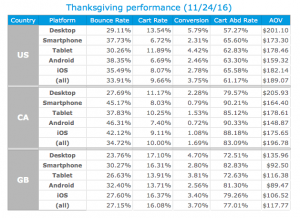— January 2, 2018
Improved agent efficiency and productivity turn call centers from a cost into a profit. The two qualities can also create a competitive advantage, which is key priority for growing organizations. While agents hold the keys to your company’s success, they are also the most expensive resource you have – accounting for 60% to 70% of expenses in a contact center. Depending on organizational needs, call centers can implement an array of different technologies, from basic to sophisticated. Monet Software predicts in their study that call centers using workforce management systems generally experience a minimum reduction of 2% for staff hours with an average potential savings in the 5-10% range. With workforce management it is generally expected that at least 25% of the time currently devoted to manual input can be saved.
For decades, workforce management has been the most valuable process in the high productivity/low cost arsenal, providing forecasting, scheduling, and tracking of employees to accurately project future staffing requirements and monitor intraday staff adherence in the voice channel. Now workforce management is being chartered with some new missions – managing agents in new social media and customer interaction channels, providing a much better user experience for agents as well as ensuring the best customer experience, while maintaining low cost.

Leading Technologies for Workforce Management in Call Centers
An efficient workforce management approach combines demand generation, skills repository, talent acquisition, allocation, learning and analytics to deliver robust talent connect. Here we list the leading technologies that help a call center in managing its workforce in best possible way.
Artificial Intelligence
AI algorithms are challenging human intelligence. With their inherent pattern recognition, self-learning and cognitive capabilities, AI powered algorithms have the ability to perform complex jobs with speed and accuracy. Businesses are getting deeper into predictive analytics, using artificial intelligence (AI) applications to help streamline call center experiences for customers and agents. Workforce managers are always challenged by the complexity of traditional workforce management systems. Beyond the intricacy involved in using the software, they also have to provide weights to generate forecasts and manually adjust on schedules that are clearly not optimal. Artificial Intelligence technology provides expert knowledge that generates forecasts with high levels of accuracy and provides provable optimal schedules. It eliminates the taxing complexities of traditional workforce management systems and focuses on the performance of contact centers. AI technology can help call center managers better route calls as well as provide human agents with the data and tools they need to create more positive interactions with customers.
Areas Where AI Helps
- Quick response of call center agents matters much to satisfy the customers. So it cannot be omitted or compromised. Because all calls are screened quickly, trends–both negative and positive–can be discovered quickly and adjustments can be made in an efficient manner.
- AI tools like speech analysis and chat bots can assist the customer improving productivity in call centers. One use of artificial intelligence in the call center is for predictive analysis of an agent’s performance based on predictive voice analytics. Predictive analysis of an agent’s performance is achieved by establishing patterns to capture good and poor agent performance in order to gauge an agent’s level of customer service. With automated, real-time monitoring of voice pitch, scripting, and key words on social, SMS or chat, call center operations can intercept negative customer interactions and provide a high level of service as incidents occur.
- AI helps in quality assurance. Using AI, there can be no bias based on a preference for certain agents or a dislike for others. AI allows every single call to be monitored in a quick and efficient manner. Every agent’s interactions can be evaluated, which means the leaders get a full picture of agents’ work and are prepared. Timely, accurate quality assurance evaluations can indicate which agents need additional training. The overall agent performance helps the leaders understand better which agent’s performance can limit the delivery of effortless customer experience.
Humana deployed artificial intelligence software trained to detect conversational cues, to coach call-center agents and supervisors, in real-time, when calls with customers were going awry. The software, built with AI tools, recognizes increasing agitation – such as a steady rise in the pitch of a customer’s voice or instances of a customer and an agent talking over each other.
Computer Telephony Integration
CTI is a type of technology that enables computer and telephone systems to interact together. Call centers implementing CTI can use computers to manage all telephone calls, which in turn leads to increased efficiency and better results. When agents using CTI receive incoming calls, a screen pop up is displayed, showing the caller’s account information on the agent’s computer screen. This saves time for both parties by giving the agent the customer info she needs to lead the call and solve the problem. CTI screen pop is often used in tandem with a unified desktop, so an agent has complete access to customer data.
The main desktop functions provided by CTI applications are: screen popping, dialing, phone control, transfers, call center agent log-in. The Common server functions provided by CTI applications are: Call routing, advanced call reporting functions, and voice recording integration.
Areas Where CTI Helps
- CTI offers simple APIs, allowing you to integrate it with existing software like your CRM, helpdesk and database. Calls can be routed to the appropriate agent group for better response. Hold time and call time can be reduced significantly by automatically directing calls to the appropriate agent. This seemingly small reduction in call time ensures greater efficiency by reducing the workload.
- An Automatic Call Distributor (ACD) typically works with Computer Telephony Integration (CTI) systems and Interactive Voice Response (IVR) to intelligently route incoming calls to the most appropriate agent.
- In addition to answering their calls via the desktop, contact center executives can also use other functionalities including hold, transfer calls, etc. They can also upload their call notes directly to the CRM to share updates with the entire team.
- Call logs are automatically entered into the CRM itself. Automating such mundane and repetitive support tasks can ease the workload and help agents focus on the critical tasks.
- Every time an agent attends a call, all relevant customer details will pop up automatically. This gives the contact center executives seamless access to updated customer data, including a record of earlier interactions, enabling them to have a more personalized interaction with each customer. It also helps cut down on call duration, improve response, and enhance customer satisfaction.
- Receive key metrics to understand the performance of your operations with computer telephony integration. It offers detailed reports with data including the call volumes, the number of missed calls, agent productivity, duration of calls and more to help you optimize your processes for higher customer satisfaction.
- CTI solutions help to determine the in-house requirements as well. CTI gives an indication of what sort of staff would be required, what training they should have, what sorts of volume of calls are to be expected and what the predictive queries could be. CTI helps to filter data and suggest only the most appropriate actions in order to conserve valuable time and resources.
At Cytrin Solutions, after implementation of CTI, call center agents were able to make more intelligent decisions driven by the data in front of them, and this resulted in increased sales. CTI implementation helped their contact center to reduce the average duration of each call, thus ensuring higher productivity of agents. The spare time could be utilized for handling other calls which eliminated the need of adding more staff.
Business Intelligence
BI tools simplify contact center volume forecasting and agent scheduling across channels, skills and locations for optimal ROI. It helps in making informed decision based on key metrics: cost forecasting, employee forecasting, agent productivity and performance, overall call center performance.

Areas Where BI Helps
- BI gives a holistic picture of the call center, complete with total call volume and its peaks and troughs. Managers can use this information to schedule the right number of agents at the right time. They can also combine call volume metrics with other data, such as holiday trends or open enrollment seasons. By leveraging multiple data points, managers can increase overall efficiency and productivity. Both effectiveness, or impact, and productivity metrics should be used together to have the most insight into agent performance, because the greater the insight, the better the solution.
- BI tools help managers see if employees are fully engaged. This is an effective means to slowing turn around and improving productivity by boasting morale. Companies can learn about issues employees have with management personal or policies in order to enrich the staff needs. BI can enable call centers to tie agent performance to specific quantitative and qualitative customer experience outcomes, which incites them to perform better.
- BI frees managers to do the job they were hired to do: manage call center agents. Rather than pulling reports, they can monitor calls and coach agents. BI is a significant time saver for senior executives, and makes their role as managers much more streamlined.
- As compliance begins to rank higher on a company’s to-do lists, BI is helping play a role in making sure call centers stay up-to-date on all the latest regulations. Speech analytics tools that can transcribe the audio of a conversation to text have been a staple of the industry for years now. Many call centers use speech analytics to aid in enforcing adherence to a preapproved conversation script.
- The use of BI makes it possible for call center managers to measure the ROI per agent as well as ROI of the entire operation. Cost per hire provides an overview of the total cost of each employee. This includes recruiting expenses, staff costs for interviews and application management, training time and maintenance. With BI tools, managers can input quantitative goals and track its progress on a daily basis. They can receive feedback from the software on inefficiencies in the business by spotting internal trends and flagging what is underperforming.
- Call centers that maintain a large workforce need to monitor the monthly turnover rate. BI tools help management plan to cover staffing needs fully.
- The BI tools can show if the workforce is diverse and that they are a socially responsible business that follows all current affirmative action guidelines regarding diversity. The diversity metrics will give the statistical breakdown of the workforce by race, gender, age and disabilities.
With Microsoft Power BI, Metro Bank tracks its call center operations, including customer demographics, call times, and call volume; analyzes online customers’ behavior via their mobile and internet banking services, and pulls off unique customer dissatisfaction reports to help plan workload more adequately. What they like the most about the system are rich data visualizations, and regular feedback from Microsoft’s specialists that helps them make the most of this tool.
Other Tools
Workforce management software is used to forecast the volume of calls (or other interaction types, like emails and chat sessions). Workforce management (WFM) software can help call center managers schedule the optimal number of agents to meet projected needs, taking into account agent breaks, training classes, planned vacations and unplanned sickness. At Ingenico, workforce management software implementation contributed to increased customer service levels by reducing response times and ensuring the right number of agents with the right skills are scheduled to resolve issues faster. Agent satisfaction and productivity also increased by allowing agents to manage their holiday and time-off requests. This responsibility, combined with a greater awareness of shift requirements around call volumes, has improved general positivity within the contact centre.
Bell Canada revamped its call center processes using a workforce management tool. Despite many changes, managers continue to use the tool to efficiently manage and schedule staff.

Real-time workforce management is the technology that groups together some of the 1 and 2 minute idle periods to free up dedicated agents for useful periods of time (typically greater than 30 minutes). By being able to seamlessly change the type of work being performed by your employees in real-time, contact centers can effectively break down the organizational silos among labor pools, whether they are in the front office, back office, different customer communication channels, different agent skill types or different software applications. Pretty soon all these minutes will start to create some significant and useful blocks of time. Of course, real-time workforce management requires real-time monitoring of ACD, chat, and email volumes in concert with tracking of agent skills to ensure that only appropriately skilled agents are transferred from one work type to another. A real-time decision-making engine uses business rules to automatically issue requests for voluntary time-off or overtime, change the staff mix of voice and other channels, adjust the training schedule, etc.
Quality management applications are used to measure how well call center agents adhere to internal policies and procedures. These applications are increasingly considered mission-critical for inbound call centers, as they give management insight into call center performance. Quality management (QM) applications are starting to be used in outbound call centers and will eventually become as valuable in those environments as they are in inbound centers. Over 30 managers in Allianz uses quality management applications for quality monitoring their teams. Staff lists are up to date, unlike their previous system which was only updated annually. The managers have increased autonomy and ownership over their quality forms as they can instantly change their scorecards to what suits their needs.
There are other varieties of Automation tools to balance the scale of efficiency and effectiveness, along with their impact on contact center agents: Skill-based routing (SBR) directs customer calls to the next available agent who has the appropriate skill set to handle the customer inquiry. Self-service technologies, such as voice response, allows customers to receive answers to their inquiries without interacting with a contact center agent. Quality recording software allows organizations to listen to select calls and provide feedback to agents regarding their performance. Knowledge management software provides a repository of information that a contact center agent can access to assist in resolving an inquiry.
Conclusion
There are varied benefits of using these technologies for workforce management. Agents with the right skills will be on the job exactly when they’re needed, reducing queue times and avoiding excessive idle time. Increasing agent utilization, reducing non-productive downtime and reducing agent overtime will result in decreased personnel costs. Schedules will be fairer, since you’ll be able to take into account employees’ work assignment preferences. In turn, that will result in reduced staff turnover and subsequent recruitment and training costs. Agents will be able to handle other types of non-real-time interactions during quiet call periods and schedule training and coaching. Agent numbers and skills can be matched to actual call patterns and volumes by changing team structures to meet demand. Every call center is under severe cost pressures, so minimizing the number of call center agents and best utilizing the agents, are the most obvious ways to save money for call centers.
Business & Finance Articles on Business 2 Community
(58)
Report Post






